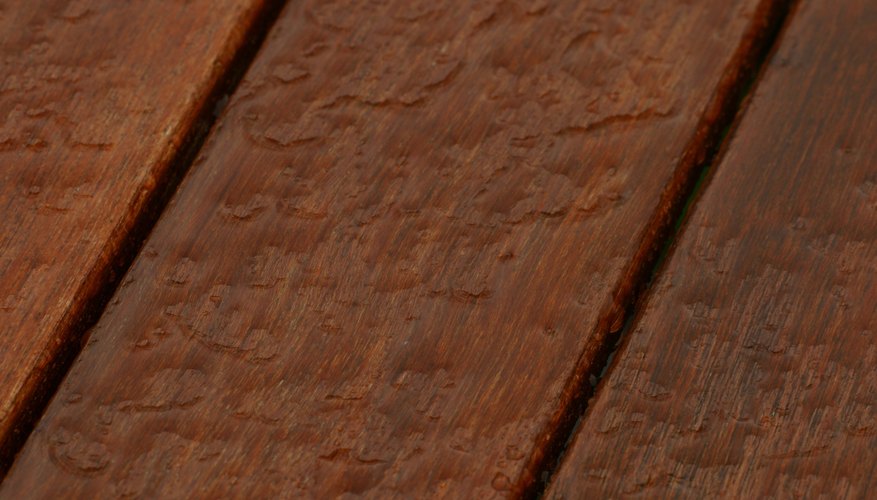Anyone who has attempted to simply paint over waxed wood can attest to the poor results produced. The paint seems to simply sit on top of the waxy surface, has a streaked finish and within a short time of drying, will simply peel off. The reason for this is that wood is porous and allows the paint to soak into the surface of the wood. Wax holds the paint on the surface and does not allow it to permeate. The removal of wax from woodwork to allow painting is a time consuming and labour intensive task, but luckily, there are various ways to do it.
Things you'll need
A bottle of white spirit. Metal scourers (not wire wool as this might damage the wood surface). Clean dry rags. A bucket of warm water with a cap of washing detergent mixed in.
- Metal scourers (not wire wool as this might damage the wood surface).
Preparation
Before you begin, it is important to prepare your workspace thoroughly. Ensure the room in which you are working is well ventilated. Windows and doors should be opened to allow air flow and you should also extinguish any open flames such as candles, an open fire or a gas fire. Cover any soft furnishings and carpets with plastic sheeting to avoid splashes of chemicals which might damage the fabric. Make sure that pets and children are kept out of the room while you work. Consider your own protection too. It would be advisable to use clear goggles, protective gloves (rubber gloves would work well) and to wear clothes and shoes that you wouldn't mind being damaged.
- Before you begin, it is important to prepare your workspace thoroughly.
- Windows and doors should be opened to allow air flow and you should also extinguish any open flames such as candles, an open fire or a gas fire.
Process
Take one of the metal scourers and wet it with white spirit. Use it on the surface of the waxed wood to abrade and leave a coating of white spirit in the wax.
Continue until the surface of the wood has been treated with white spirit all over. Allow half an hour for the white spirit to react with the waxed wood and then begin to clean the wood by rubbing vigorously with the warm detergent water and clean rags. After cleaning the wood, you should consider using an oil-based primer before painting with your top coat.
- Take one of the metal scourers and wet it with white spirit.
- Allow half an hour for the white spirit to react with the waxed wood and then begin to clean the wood by rubbing vigorously with the warm detergent water and clean rags.
Alternative
If the processes to clean the wax from your wood sound like too much hard work, there might be an alternative, meaning you could cut out all of that scrubbing and buffing. Chalk paint is a versatile matte finish paint that has a wide range of uses in decoration and has the advantage of going onto waxed surfaces without spoiling the finish. The original chalk paint was developed in the 1990s by Annie Sloan and other manufacturers have now brought out their own ranges. The chalk paint can be diluted with water to provide a distressed finish, or simply used from the can with a paintbrush for a more traditional effect. For a very smooth surface without brush marks, chalk paint can also be used with a spray gun. After the chalk paint has been applied and is fully dry, it requires a coat of soft wax over the top. Manufacturers of chalk paint also produce these waxes. When chalk paint has dried, the surface remains very porous without waxing and so would easily stain and mark. Therefore, it is important that it is finished correctly, if the area of wood is to be regularly touched or if it is, for example, a table.
- If the processes to clean the wax from your wood sound like too much hard work, there might be an alternative, meaning you could cut out all of that scrubbing and buffing.
- For a very smooth surface without brush marks, chalk paint can also be used with a spray gun.
